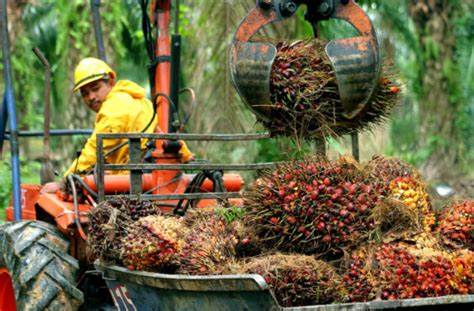Palm Oil Prices : The Invisible Threads Connecting Your Farm to the World
Have you ever wondered how the fruits from your plantation, planted with care and harvested with effort, can be influenced by events happening thousands of miles away? A shift in global energy policies, a drought in another hemisphere, or even a change in consumer preferences can ripple through the world and land right on your doorstep in the form of fluctuating palm oil prices.
It’s fascinating, isn’t it? Your palm oil farm may seem like a small corner of the world, but in reality, it’s deeply interconnected with global markets and trends. Understanding this connection can mean the difference between merely surviving and truly thriving.
In this article, we’ll explore the unseen forces that shape palm oil prices and how you, as a farmer, can harness this knowledge to ensure your plantation remains productive and profitable, no matter what the market does.
The Web of Influence : What Dictates Palm Oil Prices?
Palm oil prices are influenced by a dynamic interplay of global factors. Let’s uncover the most significant ones:
-
Supply and Demand on a Global Scale
Palm oil is a key ingredient in food, personal care products, and biofuels. When demand from large markets like India, the EU, or China surges, prices typically follow. But oversupply due to bumper harvests can have the opposite effect. -
Energy Markets and Biofuel Policies
Palm oil isn’t just about food; it’s a major component of biodiesel. When crude oil prices rise, biodiesel becomes a more attractive alternative, increasing demand for palm oil. -
Weather and Climate Patterns
Weather events such as droughts, floods, or unseasonal rains can disrupt palm oil production, tightening supply and pushing prices upward. -
Currency Exchange Rates
Since palm oil is traded globally, fluctuations in currency exchange rates can significantly impact prices. A weaker currency in a producing country often boosts exports, while a stronger currency may have the reverse effect.

Why Economic Trends Matter for Farmers
Understanding broader economic trends isn’t just for policymakers or traders; it’s vital for farmers too. Here’s why:
-
Inflation’s Dual Impact
Inflation can increase the cost of inputs like fertilizer and labor, squeezing your profit margins. At the same time, higher food prices globally may lead to better returns for your harvest. -
Sustainability Shaping the Market
Consumers worldwide are increasingly favoring sustainably sourced palm oil. Certifications and eco-friendly practices not only enhance market access but also fetch premium prices. -
Geopolitical Events as Market Movers
Policies like export restrictions or trade agreements can create supply shocks, driving prices up or down.
Thriving Amid Price Fluctuations : A Farmer’s Toolkit
What can farmers do to stay ahead in this complex environment? Here are practical steps to take:
-
Precision in Fertilization
Conduct soil tests to determine exactly what your crops need. This not only saves costs but also improves yields. -
Diversification of Crops
Consider planting high-value intercrops like cocoa or fruits alongside palm oil. This reduces dependency on a single commodity and provides financial stability. -
Timing Your Harvest
Keep an eye on market trends to determine when prices are highest. Proper storage facilities can help you hold onto your harvest until the time is right. -
Stay Connected and Informed
Join agricultural cooperatives or access global market reports to stay updated. Knowing the latest trends can guide better decision-making.
A Story of Success : Turning Knowledge into Profit
Take John, a farmer from West Africa, for example. For years, John struggled with unpredictable palm oil prices and mounting costs. One day, he attended a workshop that introduced him to precision farming and the benefits of sustainability certification. By implementing these practices, John not only increased his yield by 20% but also accessed international markets willing to pay a premium for his sustainably produced oil. His story is proof that small changes can lead to big results.
The Numbers Behind the Industry
Here are some statistics that underscore the importance of strategic planning in palm oil farming:
- Palm oil production is expected to grow at an annual rate of 4-5%, driven by increasing global demand.
- Farmers using sustainable practices report earning 15-30% more due to premium prices and improved market access.
- Diversified farms are 40% less vulnerable to price fluctuations compared to single-commodity plantations.
Conclusion
Palm oil farming is more than a business; it’s a legacy. By understanding how global trends impact prices and adopting smart, sustainable practices, you can secure the future of your farm for generations to come.
So, take a moment to reflect: How can you make your plantation not just survive, but thrive? The answer lies in staying informed, adaptable, and innovative.
The world may seem vast, but your farm has a unique role to play in feeding and fueling it. Embrace the challenge, and let your plantation shine as a symbol of resilience and prosperity.


